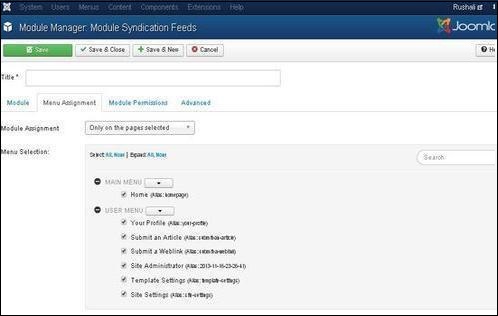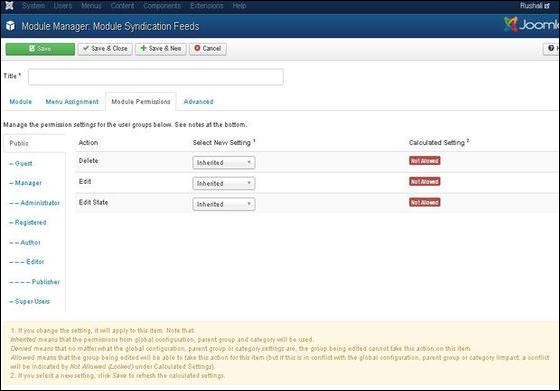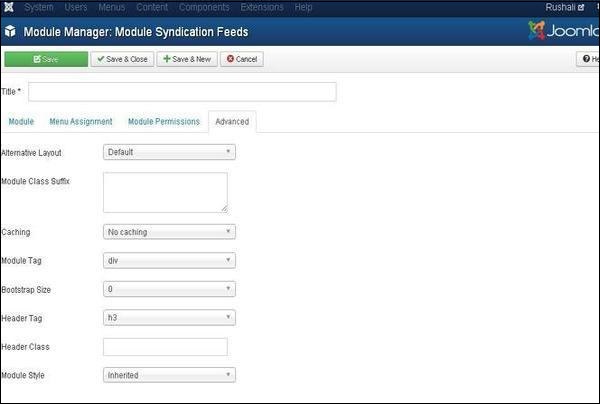What is jQuery?
jQuery is a fast and concise JavaScript Library created by John Resig in 2006 with a nice motto − Write less, do more.jQuery simplifies HTML document traversing, event handling, animating, and Ajax interactions for rapid web development.

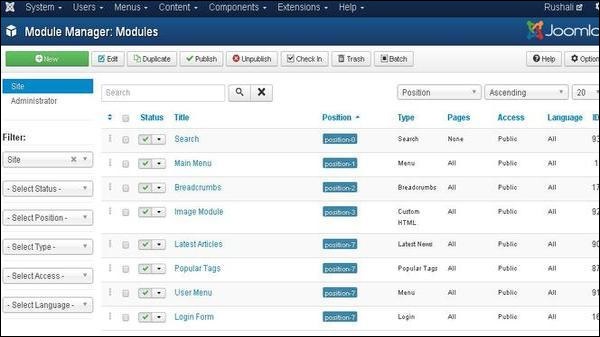 Step (2) − Next, click on New button and the following screen will get displayed. On this page, click on the Syndication Feeds.
Step (2) − Next, click on New button and the following screen will get displayed. On this page, click on the Syndication Feeds.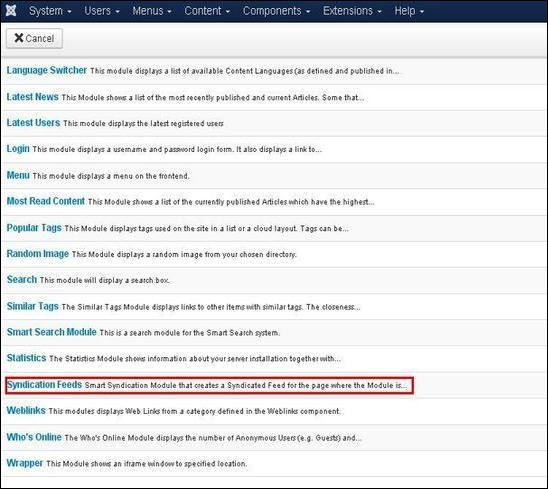 Step (3) − Next, click on Syndication Feeds, the existing Syndicate module will get displayed as shown below.
Step (3) − Next, click on Syndication Feeds, the existing Syndicate module will get displayed as shown below.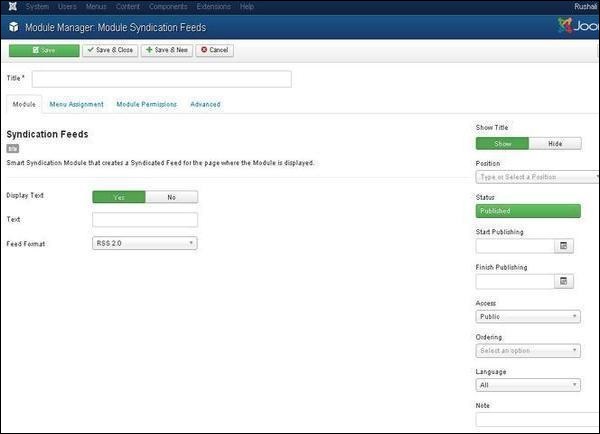 By default, the Module tab is displayed. Below, we have mentioned the details of the fields present in the Module tab.
By default, the Module tab is displayed. Below, we have mentioned the details of the fields present in the Module tab.